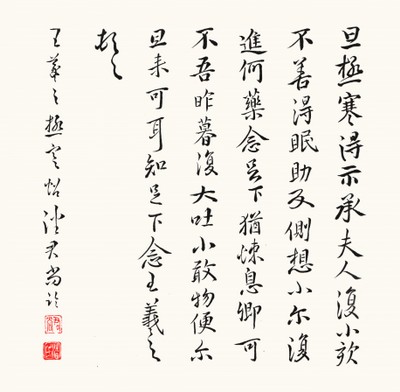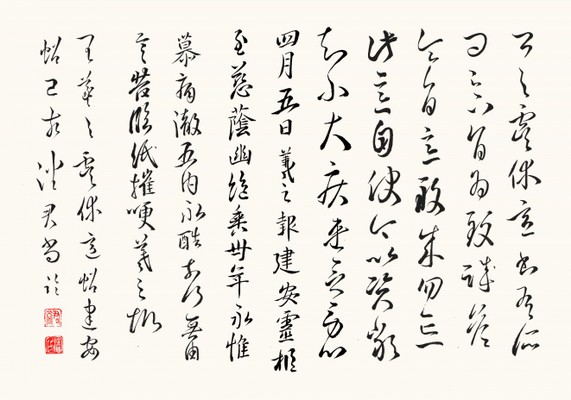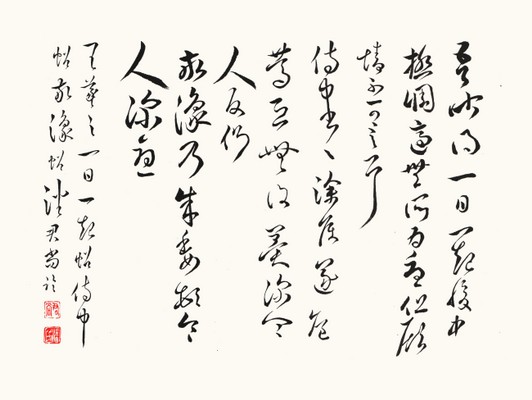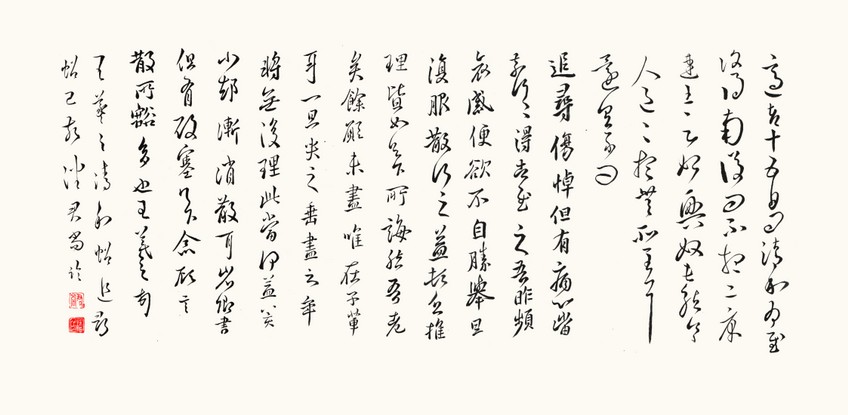Galleries and Translations > Models of Masterpieces > Models of miscellaneous Masterpieces by Wang Xizhi (part V) 臨王羲之諸法帖 (第五部份)
Models of miscellaneous Exemplary Masterpieces by Wang Xizhi (part V) 臨王羲之諸法帖 (第五部份)
Historical information
(I)
Wang Xizhi (王羲之) is often considered to be the most outstanding Chinese calligrapher of all time and is regarded as “The Sage of Calligraphy (書聖)” in China and Japan. Born in 303AD in an upper-class aristocratic family, Wang Xizhi started learning Chinese calligraphy at the age of seven from the renowned calligrapher Wei Shuo (衛鑠 or 衛夫人, 272-349AD). His father, Wang Kuang (王曠, ?-?AD), was a government prefecture chief (太守) and was also a calligrapher. His uncle, Wang Dao (王導, 276-339AD), was the prime minister (丞相) during the reign of Emperor Cheng of the Eastern Jin Dynasty (晉成帝, 321-342AD ). Further biographic information of Wang can be seen on my page regarding Lanting Xu (蘭亭帖).
(II)
The calligraphies presented below are my models of Wang Xizhi's handwriting found in Chunhua Imperial Archive of Calligraphy Exemplars (《淳化閣帖》). Supposedly, these handwritings were short letters and memos scribed by Wang. Although their authenticities are questionable, they are still often regarded as Exemplary Masterpieces (法帖) for calligraphers to study and observe. In the art of Chinese calligraphy, "帖(pronounced as Tie)" refers to an exemplary work that should be studied by all .
(III)
Since the originals in the Chunhua Imperial Archive of Calligraphy Exemplars (《淳化閣帖》) can be parts of or whole letters/memos scribed by Wang, translations that are provided below, if available, may not be entirely precise, for they can be interpreted out of context. Further, whether Wang had actually scribed them remains questionable. Accordingly, scholars should be wary of using these as authentic historical references.
A model of Dan Ji Han Tie (旦極寒帖)
35 X 37 cm
Click to Enlarge. Reserved, not available in shop.
Dan Ji Han Tie (旦極寒帖):
Original Classical Chinese: 旦極寒。得示。承夫人復小欬。不善得眠。助反側。想小爾。復進何藥。念足下猶悚息。卿可否。吾昨暮復大吐。小噉物便爾。旦來可耳。知足下念。王羲之頓首。
English: This morning it was extremely cold. Having received your letter, I know that your wife has a slight cough again and does not get much sleep, but tosses and turns ever more. I hope she will soon be better. What medicine has she been given? Thinking of you, I am deeply worried. Are you fairly well? I vomited heavily again last night. When I ate a little something, it happened again. Only in the morning did I begin to feel fairly well. I gratefully acknowledge your affection. Wang Xizhi knocks his head on the ground**. (Translated by Antje Richter & Charles Chace in The Trouble with Wang Xizhi: Illness and Healing in a Fourth-Century Chinese Correspondence (T’oung Pao 103-1-3 (2017) 33-93))
**"Wang Xizhi knocks his head on the ground (羲之頓首)" should be better interpreted as "Wang Xizhi gratefully bows in respect and deference" (KS Vincent Poon).
A model of Yu Xiu Tie (虞休帖) and Jian An Tie (建安帖)
35 X 50 cm
Click to Enlarge. Reserved, not available in shop.
Yu Xiu Tie (虞休帖):
Original Classical Chinese: 卿與虞休意書有所問,足下旨為致誠。答令旨意,致來勿忘,此意自決。今以資嚴,知小大疾連,念勞心!
English: NA. The entire phrase may not be translated, for the context in which it was written is unknown or uncertain.
Jian An Tie (建安帖):
Original Classical Chinese: 四月五日羲之報:建安靈柩至,慈蔭幽絕,垂卅年,永惟慕,痛徹五內,永酷奈何?無繇言苦,臨紙摧哽。羲之報。
English: NA. The entire phrase may not be translated, for the context in which it was written is unknown or uncertain.
A model of Yi Ri Yi Qi Tie (一日一起帖), Shi Zhong Tie (侍中帖), and Jing Yu Tie (敬豫帖)
35 X 47 cm
Click to Enlarge. Reserved, not available in shop.
Yi Ri Yi Qi Tie (一日一起帖):
Original Classical Chinese: 吾昨得一日一起,腹中極調適,無所為憂,但顧情不可言耳。
English: Recently, I managed to get up once a day. My belly is extremely well-balanced, and there is nothing to worry about. As always, my affection for you is just beyond words. (Translated by Antje Richter & Charles Chace in The Trouble with Wang Xizhi: Illness and Healing in a Fourth-Century Chinese Correspondence (T’oung Pao 103-1-3 (2017) 33-93)).
Shi Zhong Tie (侍中帖):
Original Classical Chinese: 侍中書,書徐侯遂危篤,恐無復冀,深令人反側。
English: NA. The entire phrase may not be translated, for the context in which it was written is unknown or uncertain.
Jing Yu Tie (敬豫帖):
Original Classical Chinese: 敬豫乃成委頓,令人深憂。
English: NA. The entire phrase may not be translated, for the context in which it was written is unknown or uncertain.
A model of Qing He Tie (清和帖) and Zhui Xun Tie (追尋帖)
35 X 72 cm
Click to Enlarge. Reserved, not available in shop.
Qing He Tie (清和帖):
Original Classical Chinese: 適知十五日問,清和為慰。復得南後問不?想二庾速王之始興奴長然,令人邑邑。想無所至耳,還具示問。
English: NA. The entire phrase may not be translated, for the context in which it was written is unknown or uncertain.
Zhui Xun Tie (追尋帖):
Original Classical Chinese: 追尋傷悼,但有痛心,當奈何奈何。得告慰之。吾昨頻哀感,便欲不自勝舉。旦復服散行之,益頓乏,推理皆如足下所誨。然吾老矣,餘願未盡,惟在子輩耳。一旦哭之,垂盡之年,將無復理,此當何益。冀小卻,漸消散耳。省卿書,但有毀塞。足下念顧言散,所豁多也。王羲之頓首。
English: NA. The entire phrase may not be translated, for the context in which it was written is unknown or uncertain.



